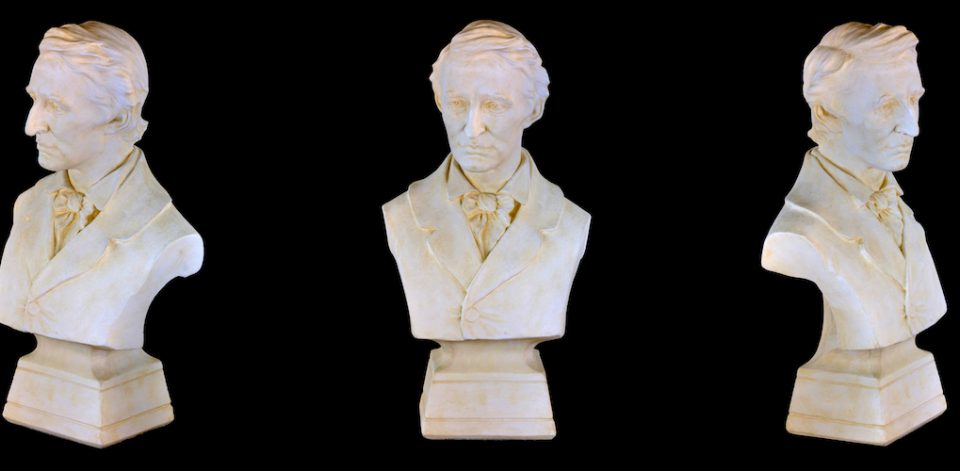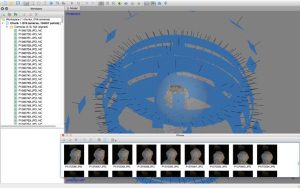
By Humtech RITCs on September 26, 2016
In June 2016, Humanities Technology, in partnership with the Thoreau Society and the Walden Woods Project, created a three-dimensional, digital reconstruction of the 1898 bust sculpture of nineteenth-century author Henry David Thoreau.
This virtual object was created using a process that renders 3D models and realistic textures from high-resolution digital photographs, otherwise known as photogrammetry. Because we have so few portraits of Thoreau, the Ricketson bust is an important work.

The original artist, Walton Ricketson, was the son of Daniel Ricketson, one of Thoreau’s closest friends. When he created the bust, nearly 40 years after Thoreau’s death, Ricketson worked from memory, relying on what he could recall of his family friend with the aid of the few photographs and illustrations that were made of Thoreau during the writer’s lifetime.
But unless one has seen either the original at the Concord Museum or one of the two replicas at the Concord Free Public Library and the Walden Woods Project’s Thoreau Institute, the three-dimensional likeness of the famous Transcendentalist is often limited to just two dimensions in photographs. Now with photogrammetry, we can view Ricketson’s bust sculpture of Thoreau—or any three-dimensional work of art—in a virtual 3D space, allowing us to see it from any angle we choose.
How it was done
This virtual Thoreau project began with approximately 500 high-resolution digital photographs. Tom Hersey (UMass Lowell) covered every possible angle using low ISO settings to collect as much data as possible from each. With the photography complete, the files were uploaded to the cloud and the process of digital reconstruction began.
Agisoft PhotoScan was used to extract data points from each image and convert them into a 3D model. A typical photogrammetry project workflow is as follows: a software tool such as PhotoScan extracts data points from photographs; points are then paired with others from the set to create a point cloud based on measurement estimates that were calculated from the data points; a mesh structure is created by connecting the points; and finally the wireframe is overlaid with a texture rendered from the photographs to simulate the physical appearance of the object. The process can be fairly time consuming but the quad-core MacPro6 workstations at UCLA’s former Scholarly Innovation Lab helped to speed up the workflow.

The final product can be viewed with a number of different 3D viewers: 3D PDF files, Javascript-based WebGL engines, and third-party web-based viewers like Sketchfab. The model will be hosted on both the Walden Woods Project website and the Digital Thoreau Project website later this year. Currently, it is available for you to view version 1.0 on Sketchfab.
Rendering a new image of Henry David Thoreau in digital form may be a good way to re-introduce readers in the twenty-first century to the nineteenth-century writer. While the most iconic images of Thoreau show him as an older man with facial hair—either the Galway beard of the Maxham or the full beard in the Dunshee—the Ricketson likeness is significant because it represents Thoreau as he looked for most of his adult life. It also represents Thoreau as a younger man, giving audiences a new way to see the young man who went to the woods of Concord in 1845.
Next time we’ll talk about how we printed our 3D model with the help of UCLA’s Lux Lab.
Featured image: The virtual Thoreau bust viewed from four different angles.
Resources:
- Agisoft Photoscan [http://www.agisoft.com/]
- Digital Thoreau Project [www.digitalthoreau.org]
- Sketchfab [https://sketchfab.com]
- UCLA’s English Department [http://www.english.ucla.edu/]
- Walden Woods Project [www.walden.org]
